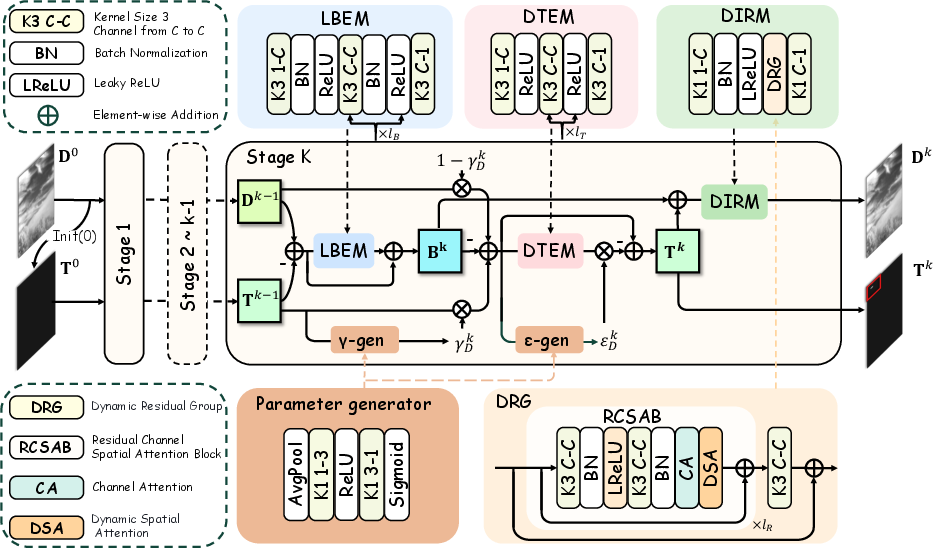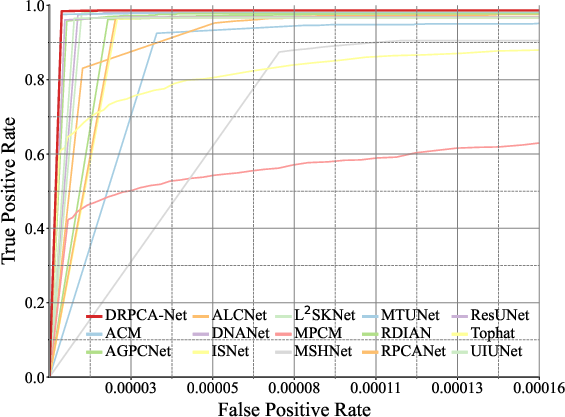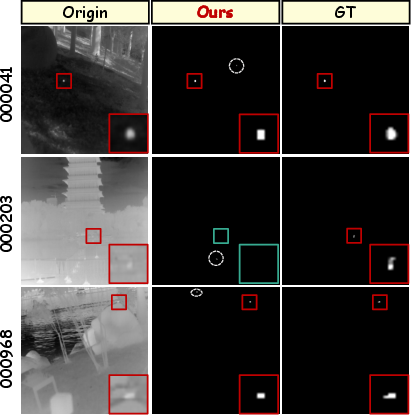- The paper introduces DRPCA-Net, a novel network that unfolds the RPCA optimization process into a staged deep learning model for infrared target detection.
- It integrates dynamic parameter generation and spatial attention to enhance interpretability and adaptability to varying infrared scenes.
- Experimental evaluations on benchmark datasets demonstrate superior detection accuracy with notable improvements in mIoU and F1 scores.
DRPCA-Net: Make Robust PCA Great Again for Infrared Small Target Detection
The paper "DRPCA-Net: Make Robust PCA Great Again for Infrared Small Target Detection" (2507.09541) proposes a novel network architecture, DRPCA-Net, which adapts the traditional Robust Principal Component Analysis (RPCA) method for the infrared small target detection domain. By integrating model-based optimization with deep learning techniques, DRPCA-Net offers enhanced interpretability alongside superior detection performance.
Deep Unfolding Architecture
Dynamic RPCA Network (DRPCA-Net) Overview
DRPCA-Net unfolds the RPCA optimization process into a layer-wise neural network structure to preserve RPCA's interpretability and enhance adaptability with learnable components. This network is comprised of K stages, each containing three modules: Latent Background Encoder Module (LBEM), Dynamic Target Extraction Module (DTEM), and Dynamic Image Reconstruction Module (DIRM), along with a Parameter Generator.
Latent Background Encoder Module (LBEM)
The LBEM estimates the low-rank background by applying a corrective mapping to the input residual, thereby eliminating the need for computationally intensive matrix operations often involved in RPCA, such as singular value decomposition (SVD).
Dynamic Target Extraction Module (DTEM)
DTEM replaces fixed parameters with dynamically generated ones for target refinement. Through a hypernetwork, stage-specific parameters are generated based on the input, allowing the model to adaptively modulate based on scene characteristics. This approach enhances robustness and generalization.
Dynamic Image Reconstruction Module (DIRM)
DIRM goes beyond simple component aggregation by using the proposed Dynamic Residual Group (DRG) module, which integrates residual learning with dynamic spatial attention to handle spatially varying background patterns.

Figure 1: Overall structure of DRPCA-Net. The network is composed of K stages, and the structure of each stage is identical.
Experimental Evaluation
Performance Metrics on Benchmark Datasets
DRPCA-Net was rigorously evaluated on popular infrared datasets, including SIRST V1, NUDT-SIRST, SIRST-Aug, and IRSTD-1K. It achieved state-of-the-art results in detection accuracy, demonstrated by superior mIoU and F1 scores compared to traditional methods and contemporary deep learning models. DRPCA-Net's ability to dynamically adapt to varying scenarios and efficiently process imagery is evident in both its accuracy metrics and computational efficiency.

Figure 2: Comparative ROC curve analysis of detection methods on NUDT-SIRST dataset.
Success and Failure Cases
Qualitative analysis reveals DRPCA-Net's proficiency in accurately delineating small targets within noisy backgrounds and complicated domain scenes. However, its assumptions about sparsity and low-rank backgrounds might occasionally yield false positives in highly cluttered environments.

Figure 3: Examples of failure cases on the IRSTD-1K dataset. From left to right: original infrared image, DRPCA-Net prediction, and ground truth.
Conclusion
DRPCA-Net effectively melds the rigorous mathematical foundation of RPCA with modern neural network flexibility, thus offering a robust approach to complex problems in infrared small target detection. Its architecture, particularly the dynamic parameter generation and advanced feature refinement capabilities, creates a sophisticated yet efficient solution that establishes new performance benchmarks across multiple datasets. Future explorations could further enhance its adaptability to environments that diverge from the predefined model assumptions.


